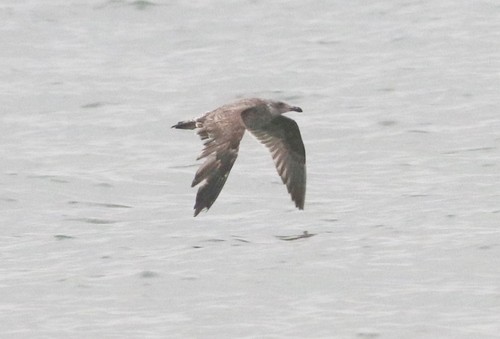Western Gull
A species of Gulls Scientific name : Larus occidentalis Genus : Gulls
Western Gull, A species of Gulls
Botanical name: Larus occidentalis
Genus: Gulls
Content
Description People often ask General Info
 Photo By silversea_starsong , used under CC-BY-NC-4.0 /Cropped and compressed from original
Photo By silversea_starsong , used under CC-BY-NC-4.0 /Cropped and compressed from original Description
The western Gull's dark back feathers and its large size set it apart from other gulls. It is a voracious feeder, eating fish, carrion, and invertebrates. It forages for food along shorelines and in the ocean. The bird is even known to take milk from female seals while they are sleeping.
Size
61 - 69 cm
Colors
Gray
White
Life Expectancy
25 years
Nest Placement
Cliff
Clutch Size
1 - 3 eggs
Feeding Habits
Western Gull are omnivorous and opportunistic, foraging in intertidal and adjacent ocean waters. They feed on fish, invertebrates, mollusks, crustaceans, and carrion, using techniques from pouncing to dropping shells to break them. They also consume sea bird young, and human refuse, unable to dive, thus feeding at the water's surface.
Habitat
Western Gull typically inhabit coastal regions, showcasing a preference for isolated and undisturbed areas like islands and headlands. These birds thrive at sea level and favor moderate maritime climates. During nesting, they seek environments offering protection, such as rocky outcrops or vegetation, and utilize human-made structures when available. Foraging occurs both offshore and along coasts, with opportunistic behavior leading them to exploit food sources near human activity. Resting flocks are common in open, flat urban spaces adjacent to their natural coastal habitats.
Nest Behavior
Western Gull pairs partake in scraping and lining their nest together, followed by the laying of eggs. They exhibit diligent parenting, taking turns incubating eggs and tending to the young once hatched.
Nest Characteristics
Western Gull nests are found on islands, offshore rocks, or deserted piers, evading land predators. Their ground-scrapes are near windbreaks and lined with natural debris like grass, seaweed, or feathers. These nests span roughly 11.8 inches, with a 5.9-inch-wide and 2.4-inch-deep inner bowl.
Dite type
Piscivorous
People often ask
General Info
Feeding Habits
Bird food type
Behavior
Western Gull engage in distinct courtship rituals such as mutual head-tossing and unique 'choking' displays. Bonds often last a lifetime, with territorial males establishing nesting areas and engaging in protective ceremonies and aggressive behaviors to safeguard their territories, partners, and offspring. Both parents are involved in the incubation process, taking turns with distinct greeting rituals. They maintain a fierce territorial defense against rivals and are notably combative, employing pecking and wing-battering during conflicts. This aggression extends to interspecies interactions, particularly in mixed colonies.
Distribution Area
The western gull is a year-round resident in California, Oregon, Baja California, and southern Washington. It is migratory, moving to northern Washington, British Columbia, and Baja California Sur to spend the nonbreeding season. 
Species Status
Not globally threatened.